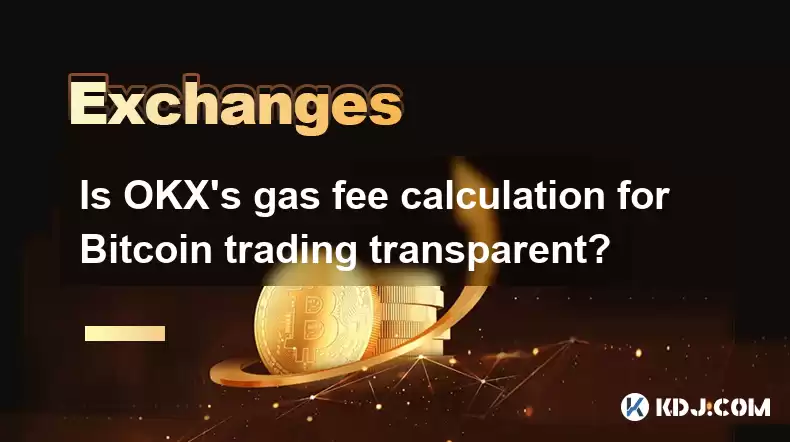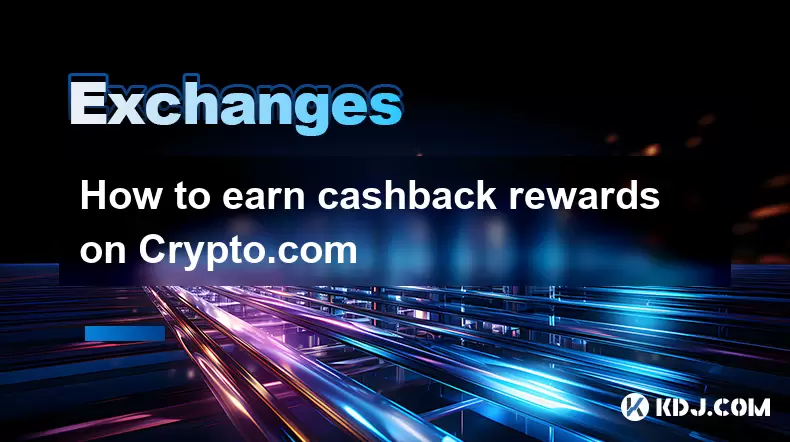-
 Bitcoin
Bitcoin $119200
-0.90% -
 Ethereum
Ethereum $4589
-2.03% -
 XRP
XRP $3.117
-4.82% -
 Tether USDt
Tether USDt $1.000
0.04% -
 BNB
BNB $839.9
-1.38% -
 Solana
Solana $196.4
-2.55% -
 USDC
USDC $0.9999
0.00% -
 Dogecoin
Dogecoin $0.2270
-7.72% -
 TRON
TRON $0.3605
0.74% -
 Cardano
Cardano $0.9306
5.96% -
 Chainlink
Chainlink $22.51
-5.00% -
 Hyperliquid
Hyperliquid $45.20
-1.80% -
 Sui
Sui $3.794
-5.63% -
 Stellar
Stellar $0.4259
-5.59% -
 Bitcoin Cash
Bitcoin Cash $593.1
-2.38% -
 Ethena USDe
Ethena USDe $1.000
-0.01% -
 Hedera
Hedera $0.2540
-3.84% -
 Avalanche
Avalanche $23.93
-4.50% -
 Litecoin
Litecoin $124.1
-5.62% -
 Toncoin
Toncoin $3.398
-1.33% -
 UNUS SED LEO
UNUS SED LEO $9.274
0.30% -
 Shiba Inu
Shiba Inu $0.00001305
-5.57% -
 Uniswap
Uniswap $11.06
-8.90% -
 Polkadot
Polkadot $4.034
-4.88% -
 OKB
OKB $99.33
-10.53% -
 Dai
Dai $0.9999
-0.01% -
 Bitget Token
Bitget Token $4.638
-3.60% -
 Cronos
Cronos $0.1541
-8.58% -
 Aave
Aave $313.0
-4.94% -
 Pepe
Pepe $0.00001127
-8.04%
Is OKX's gas fee calculation for Bitcoin trading transparent?
OKX provides estimated Bitcoin transaction fees, not directly controllable, reflecting network congestion and transaction size. The final fee, determined on-chain, is verifiable on block explorers, offering post-transaction transparency.
Mar 10, 2025 at 11:50 pm

Key Points:
- OKX's Bitcoin trading gas fees aren't directly "gas fees" in the same way as Ethereum. They're network fees, primarily Bitcoin transaction fees.
- Transparency depends on the level of detail sought. OKX displays the estimated fee before confirmation, but the precise final fee is determined on-chain.
- Factors influencing the fee include network congestion, transaction size, and the user's chosen fee priority (faster confirmation usually means higher fees).
- Understanding the underlying Bitcoin network's fee mechanism is crucial to interpreting OKX's displayed fees.
- OKX doesn't control the Bitcoin network fees; they simply relay transactions.
Is OKX's gas fee calculation for Bitcoin trading transparent?
The question of transparency regarding OKX's "gas fees" for Bitcoin trading requires clarification. Unlike Ethereum, which uses gas to measure computation costs on its network, Bitcoin utilizes transaction fees based on the size and priority of the transaction. OKX, as a Bitcoin exchange, facilitates these transactions, displaying an estimated fee before the user confirms the trade. This estimate, however, is not the final fee. The final fee is determined by the Bitcoin network itself and is only known after the transaction is included in a block.
The transparency of OKX's fee calculation lies in the visibility of the estimated fee. Before confirming a Bitcoin trade, OKX provides a preview of the anticipated network fee. This fee is usually calculated based on the current Bitcoin network congestion and the size of the transaction. However, this is just an estimate, and the actual fee can vary slightly. The exchange does not control the final fee, as it is determined by Bitcoin miners based on network conditions.
The accuracy of the estimated fee largely depends on the current state of the Bitcoin network. During periods of high network activity, the estimated fee might be lower than the actual fee. Conversely, during periods of low activity, the estimate might be higher than the final fee. This is inherent to the decentralized nature of the Bitcoin network and is not unique to OKX. All exchanges dealing with Bitcoin transactions face this same dynamic.
Understanding the factors that influence the Bitcoin transaction fee is vital to interpreting OKX's displayed fees. These factors include:
- Network Congestion: Higher network congestion (more transactions competing for inclusion in blocks) leads to higher transaction fees.
- Transaction Size: Larger transactions generally incur higher fees. This is because they consume more space in a block.
- User-Selected Fee Priority: Users can often select a "priority" for their transaction. Higher priority (faster confirmation) usually means a higher fee.
OKX's role is primarily to relay the transaction to the Bitcoin network. They do not set the fees themselves. They act as an intermediary, passing along the user's transaction with the user-specified or automatically calculated fee to the Bitcoin network. The miners then process the transaction and determine its final fee based on network conditions.
The final fee is publicly recorded on the Bitcoin blockchain. This means that after a trade is completed, you can verify the exact fee paid by looking up the transaction on a Bitcoin block explorer like blockchain.com or Blockstream Explorer. This provides a degree of post-transaction transparency.
While OKX displays an estimated fee, the lack of precise control over the final fee, due to the decentralized nature of Bitcoin, might lead some to perceive a lack of complete transparency. However, the fee estimation, coupled with the ability to verify the final fee on the blockchain, offers a reasonable level of transparency for Bitcoin transactions. The limitations stem from the underlying Bitcoin protocol itself, not from any deliberate opacity on OKX's part.
Frequently Asked Questions:
Q: Why does the estimated Bitcoin fee on OKX sometimes differ from the final fee?
A: The estimated fee is a prediction based on current network conditions. The actual fee is determined by Bitcoin miners after the transaction is processed, which may differ due to fluctuating network congestion.
Q: Can I control the Bitcoin transaction fee on OKX?
A: To a limited extent. OKX usually offers options to choose a higher fee for faster transaction confirmation, or a lower fee for slower confirmation. You cannot directly set the exact fee.
Q: Is there a way to minimize the Bitcoin transaction fee on OKX?
A: You can often minimize fees by selecting a slower confirmation time, although this means longer wait times for your transaction to complete. Trading during periods of lower network congestion can also help reduce fees.
Q: Where can I find the final Bitcoin transaction fee after trading on OKX?
A: You can find the final fee by searching for your transaction ID on a Bitcoin block explorer such as blockchain.com or Blockstream Explorer.
Q: Does OKX profit from the Bitcoin transaction fees?
A: OKX doesn't directly profit from the Bitcoin transaction fees. They pass these fees directly to the Bitcoin network. Their revenue comes from trading fees and other services they offer.
Q: Are the fees displayed on OKX competitive compared to other exchanges?
A: The competitiveness of OKX's Bitcoin fees depends on current network conditions. It's recommended to compare estimated fees across different exchanges before executing a trade. However, remember the final fee will ultimately depend on the Bitcoin network, not the exchange.
Disclaimer:info@kdj.com
The information provided is not trading advice. kdj.com does not assume any responsibility for any investments made based on the information provided in this article. Cryptocurrencies are highly volatile and it is highly recommended that you invest with caution after thorough research!
If you believe that the content used on this website infringes your copyright, please contact us immediately (info@kdj.com) and we will delete it promptly.
- Kazakhstan's Crypto Leap: Bitcoin ETF and Central Asia's Digital Finance Future
- 2025-08-13 12:45:19
- BlockDAG Presale Blazes Past $371M: Fundraising Frenzy Fuels Crypto Sensation
- 2025-08-13 13:05:21
- Meme Coins: Chasing the 2025 Surge – Which Will Moonshot?
- 2025-08-13 10:25:23
- Bitcoin's Wild Ride: Rally, Pullback, and What's Next
- 2025-08-13 10:25:23
- Bitcoin, Bitmax, and Institutional Demand: A New Era of Crypto Investment
- 2025-08-13 10:45:12
- Solana, ROAM, and Airdrops: What's the Buzz in 2025?
- 2025-08-13 11:35:13
Related knowledge

How to use margin trading on Poloniex
Aug 08,2025 at 09:50am
Understanding Margin Trading on Poloniex

How to read the order book on KuCoin
Aug 10,2025 at 03:21pm
Understanding the Order Book Interface on KuCoinWhen accessing the order book on KuCoin, users are presented with a real-time display of buy and sell ...

How to read the order book on KuCoin
Aug 12,2025 at 02:28am
Understanding the Basics of Staking in CryptocurrencyStaking is a fundamental concept in the world of blockchain and cryptocurrencies, particularly wi...

How to set price alerts on Kraken
Aug 11,2025 at 08:49pm
Understanding Price Alerts on KrakenPrice alerts on Kraken are tools that allow traders to monitor specific cryptocurrency pairs for price movements. ...

How to avoid high gas fees on Uniswap
Aug 13,2025 at 11:35am
Understanding Gas Fees on UniswapGas fees on Uniswap are payments made to Ethereum miners or validators for processing transactions on the blockchain....

How to earn cashback rewards on Crypto.com
Aug 12,2025 at 02:08am
Understanding Cashback Rewards on Crypto.comCashback rewards on Crypto.com are a feature designed to incentivize users to spend using their Crypto.com...

How to use margin trading on Poloniex
Aug 08,2025 at 09:50am
Understanding Margin Trading on Poloniex

How to read the order book on KuCoin
Aug 10,2025 at 03:21pm
Understanding the Order Book Interface on KuCoinWhen accessing the order book on KuCoin, users are presented with a real-time display of buy and sell ...

How to read the order book on KuCoin
Aug 12,2025 at 02:28am
Understanding the Basics of Staking in CryptocurrencyStaking is a fundamental concept in the world of blockchain and cryptocurrencies, particularly wi...

How to set price alerts on Kraken
Aug 11,2025 at 08:49pm
Understanding Price Alerts on KrakenPrice alerts on Kraken are tools that allow traders to monitor specific cryptocurrency pairs for price movements. ...

How to avoid high gas fees on Uniswap
Aug 13,2025 at 11:35am
Understanding Gas Fees on UniswapGas fees on Uniswap are payments made to Ethereum miners or validators for processing transactions on the blockchain....

How to earn cashback rewards on Crypto.com
Aug 12,2025 at 02:08am
Understanding Cashback Rewards on Crypto.comCashback rewards on Crypto.com are a feature designed to incentivize users to spend using their Crypto.com...
See all articles

























































































